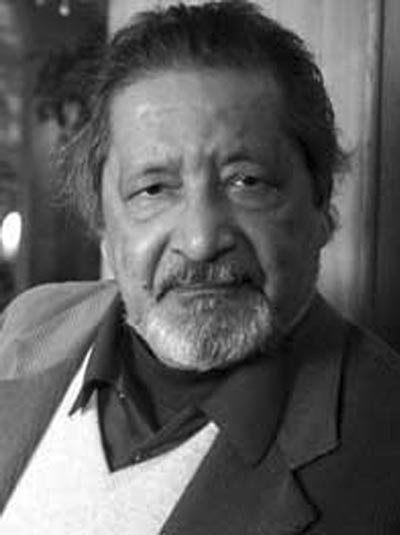
Vidiadhar Surajprasad Naipaul was born in a small town in Trinidad into a family of Indian Brahmin origin. His father, Seepersad Naipaul, was a correspondent for the Trinidad Guardian. He also published short stories. When Naipaul was six the family moved to Port of Spain, the capital. Seepersad Naipaul died of a heart attack in 1953 without witnessing the success of his son as a writer. At the age of 18 he had written his first novel which was rejected by the publisher.
Naipaul was educated at Queen’s Royal College, Port of Spain, and in 1950 he won a scholarship to Oxford. In 1949, after having some pictures of himself taken for his application to the university, Naipaul wrote to his elder sister: “I never knew my face was fat. The picture said so. I looked at the Asiatic on the paper and thought that an Indian from India could look no more Indian than I did… I had hoped to send up a striking intellectual pose to the University people, but look what they have got.” After a nervous breakdown he tried to commit suicide, but luckily the gas meter ran out. While at Oxford he met Patricia Hale; they married in 1955. She died in 1996 and Naipaul married Nadira Alvi, a divorced Pakistani journalist.
On graduation Naipaul started his career as a freelance writer. During this period Naipaul felt himself rootless, but found his voice as a writer in the mid-1950s, when he started to examine his own Trinidadian background. From 1954 to 1956 Naipaul was a broadcaster for the BBC’s Caribbean Voices, and between the years 1957 and 1961 he was a regular fiction reviewer for the New Statesman.
Naipaul published his first books in the late 1950s, but they did not make much money for him or his publisher. However, he knew his value as a writer and refused to write a review for The Times Literary Supplement for their usual fee. Naipaul’s novel The Mystic Masseur (1957), about a bright young man, who dreams of becoming a famous writer, was adapted for the screen by Ismail Merchant.
Miguel Street (1959) was a farewell to Port of Spain, Trinidad.
In 1961 appeared A House For Mr. Biswas, often regarded as his masterpiece, which tells the tragicomic story of the search for independence and identity of a Brahmin Indian living in Trinidad. The story, which fuses social comedy and pathos, follows his struggle in variety of jobs, from sign painter to journalist, to his final triumph. Later Naipaul returned to his father in Between Father And Son (1999), a record of their correspondence in the early 1950s.
In 1961 Naipaul received a grant from the Trinidad government to travel in the Caribbean. His first non-fiction book was The Middle Passage (1962), in which he described his first revisiting of the West Indies. Its examination of racial tensions made black West Indians call Naipaul a ‘racist.’ From the wide period of travels in the 1960s and early 1970s in India, South-America, Africa, Iran, Pakistan, Malaysia and the USA, Naipaul produced among others India : A Wounded Civilization (1977), and A Bend In The River (1979), a pessimistic novel about Africa, proclaiming the corruptibility of mankind.
Since 1950 Naipaul has lived in Britain, but travelled extensively. His essays and travel writings are often negative, unsentimental explorations of West Indian society as in The Middle Passage (1962). Among The Believers : An Islamic Journey (1981) was accused by Muslim readers of narrow and selective vision of Islam. Naipaul searches the sources of the new Islam—and the ideological rage. Naipaul’s other travel books include Beyond Belief : Islamic Excursions Among The Converted Peoples (1998), intimate portraits from his journeys to the non-Arab Islamic countries of Indonesia, Iran, Pakistan, and Malaysia. Naipaul tries to understand the fundamentalist fervour that have marked the Western image of the region.

